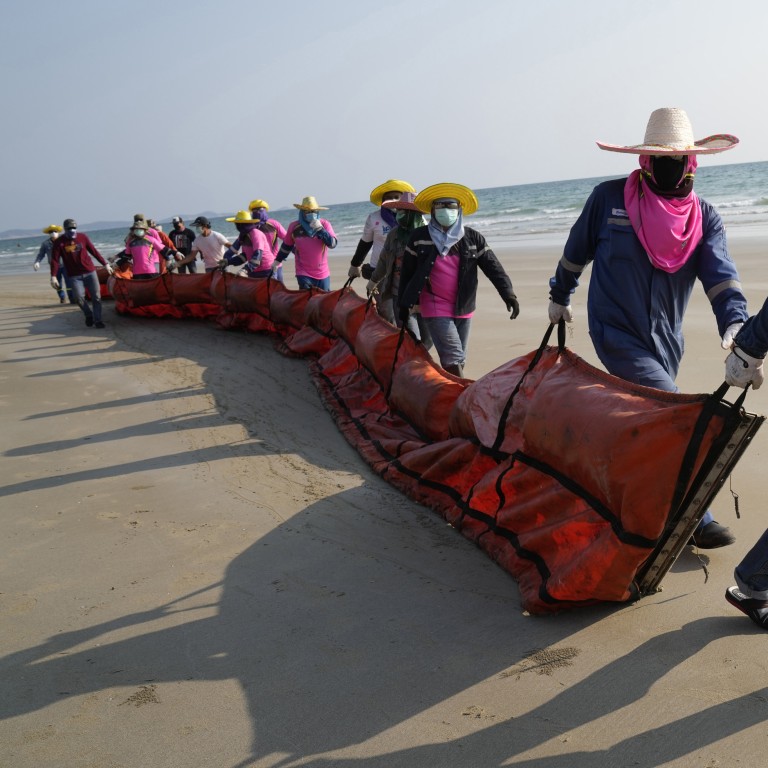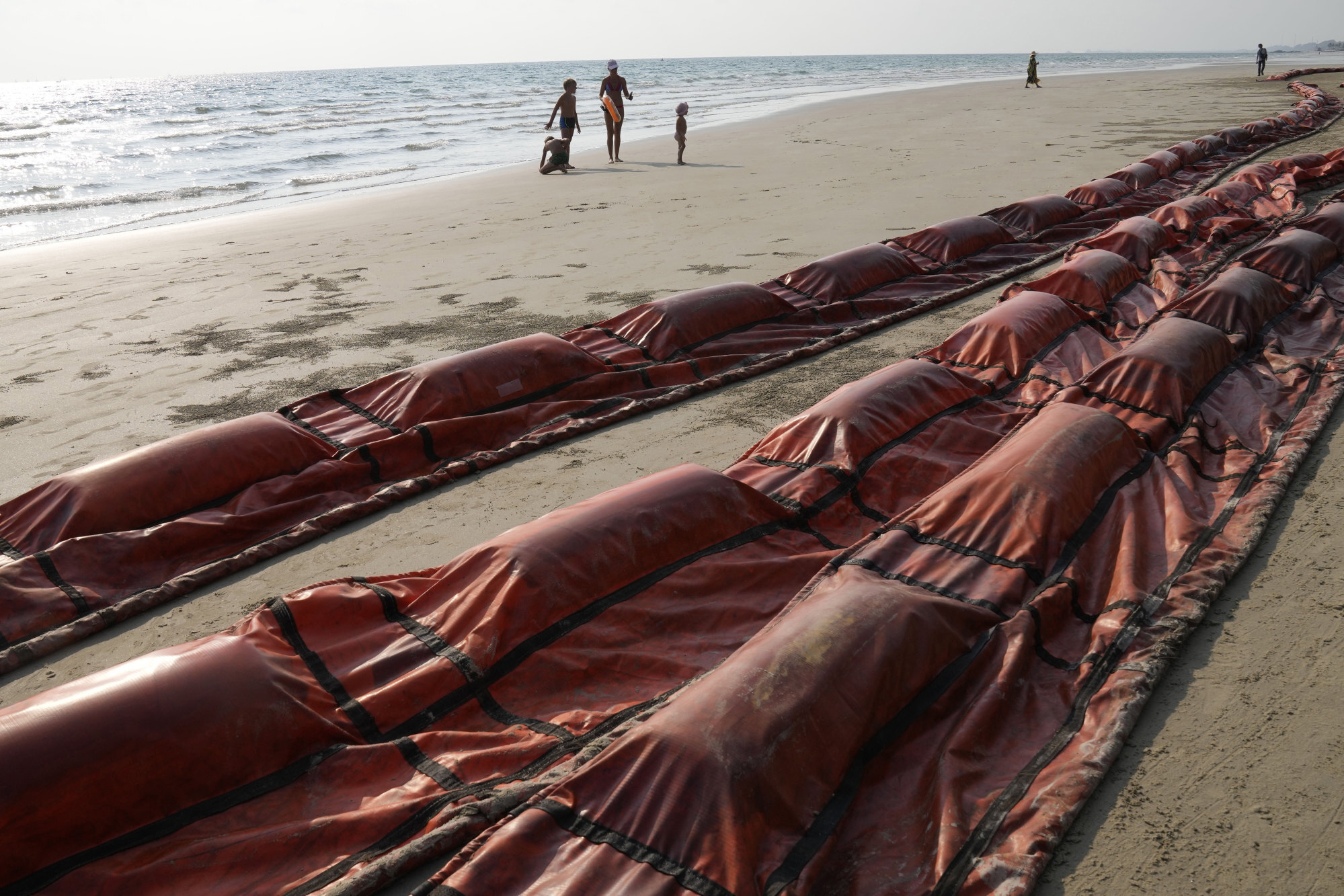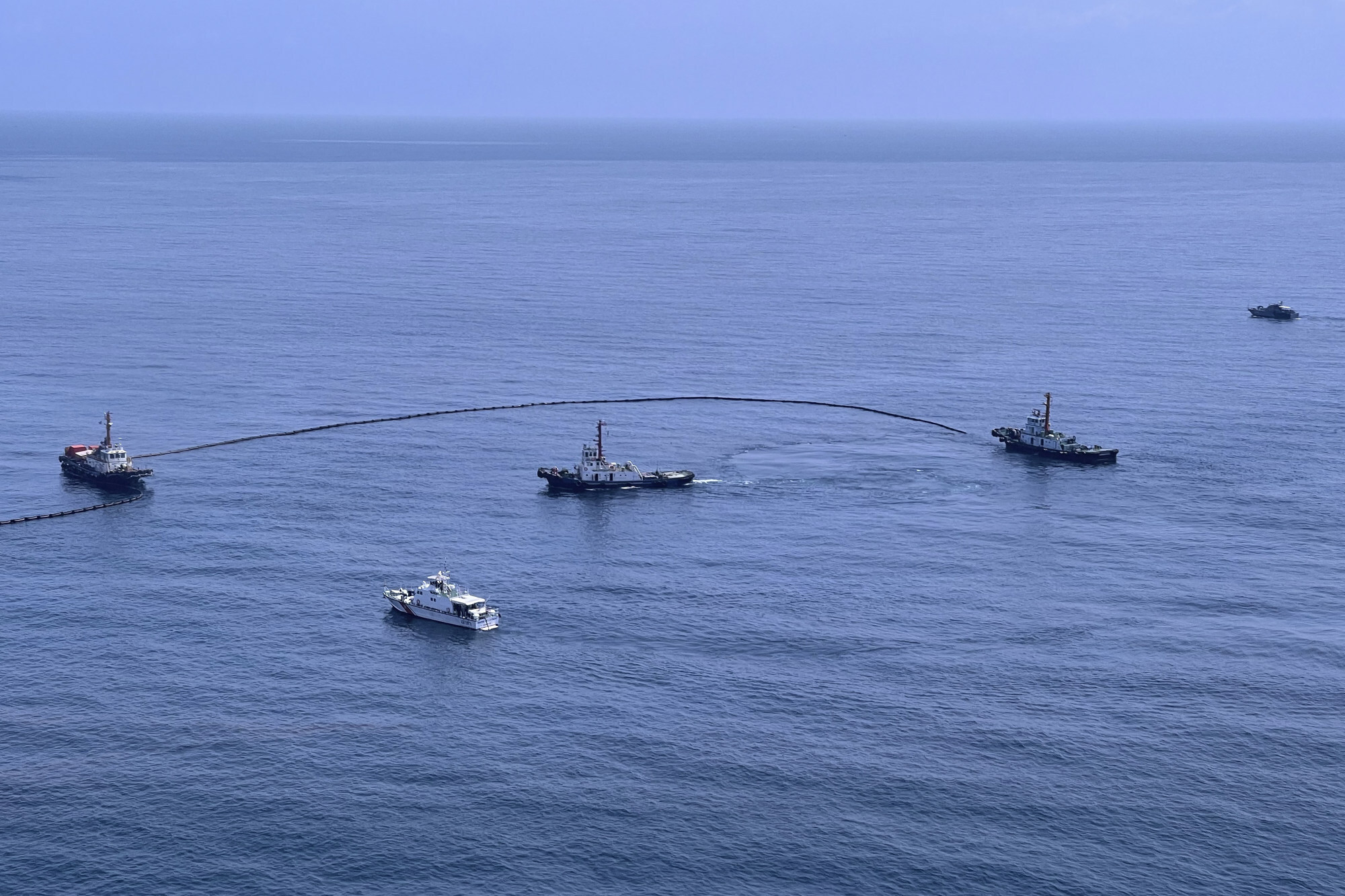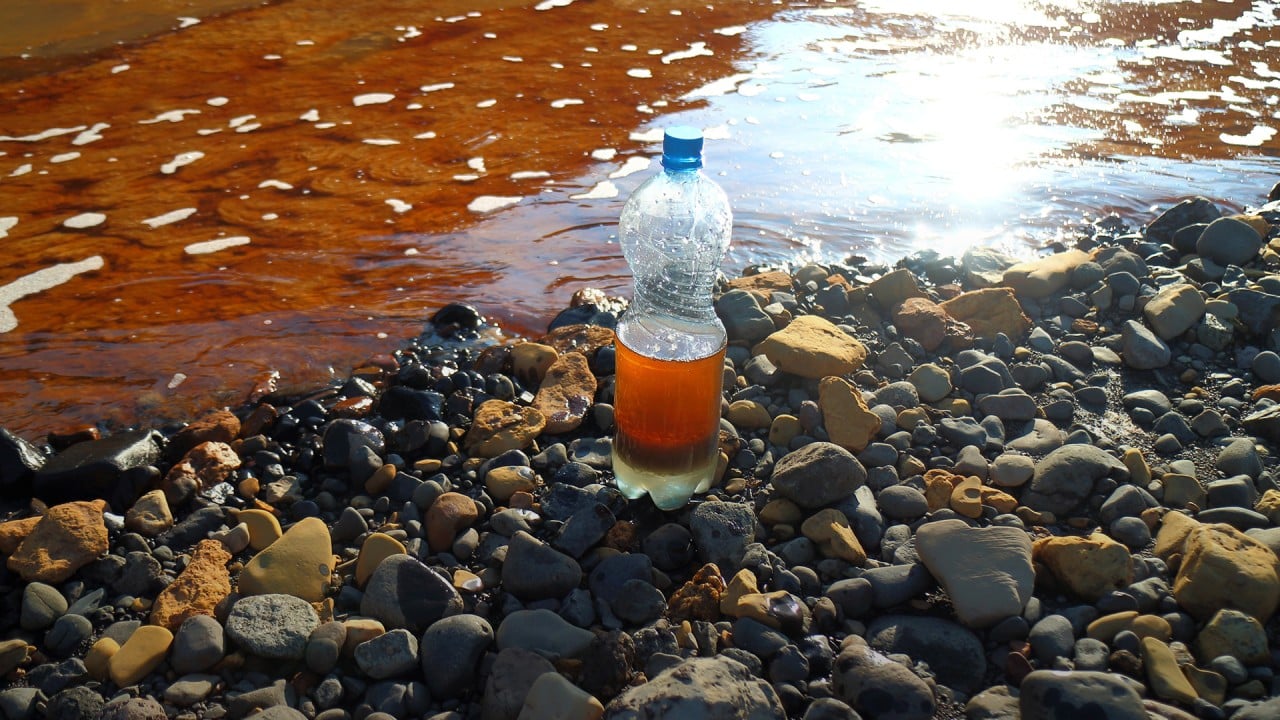
Thailand: Oil spill heading for east coast beaches; if hits ‘will take years to clean up’
- Oil leak from offshore mooring point stopped but there are two slicks, largest covering 18 square miles; desperate attempt under way to clean up
- Thon Thamrongnawasawat, marine biologist, says clearing oil from sea surface takes days but on shore ‘years’ needed to rehabilitate environment
An oil slick off the coast of Thailand continued to expand on Friday and was approaching beaches on the east coast, home to fragile coral and seagrass, officials said.
There are now two slicks, a small one about one square km (less than half a square mile) that is closer to the coast and another that has broadened to 47 square kilometres (18 square miles) that is not far behind it, said Siam Lawawirojwong, director of the department that deals with disasters at Thailand’s Geo-Informatics and Space Technology Development Agency.

The Royal Thai Navy, which has been part of the clean-up and containment effort, said the main slick is expected to reach an area of coast including the Khao Lam Ya National Park by about 10pm. The park is home to a variety of seabirds and fish.
In preparation, floating booms were being deployed to try and trap the oil and contain it so that it can be collected from the surface and removed.
Malaysia sends planes to help Thailand clear up oil slick
“Cleaning up the oil slicks in the sea may take five to seven days, but if the oil slicks reach the shore, it will take years to rehabilitate the environment,” said Thon Thamrongnawasawat, a prominent Thai marine biologist.
“So we have to do everything possible not to let it hit the shore,” he said.
Pornsri Sutthanarak, deputy director general of the Marine and Coastal Resources Department, said on Thursday that if the oil reaches the coast, it might also affect 59 acres of coral and 118 acres of seagrass, causing environmental damage that would take time to rehabilitate.

Initial estimates from Thailand’s Pollution Control Department were that much more oil had leaked than reported by Star Petroleum Refining, and Siam said it was not possible at this juncture to say exactly how much was in the slicks.
“We cannot estimate the volume of the oil spill from the satellite images,” he said. “To know the volume we need to know the depth of the oil.”
The navy characterised the slick as a “thin film” of oil on the surface of the sea.
The leak occurred at about 9pm local time Tuesday at a mooring station about 20km (12 miles) southeast of the Map Ta Phut Industrial Estate, south of Bangkok, Star Petroleum Refining said.
On Thursday the main slick covered 11.65 square kilometres (4.5 square miles) and Star Petroleum Refining said it had been spraying dispersants on the slick to try and clear it from the surface as it approached Rayong province beaches.
In all, four ships have been deployed to skim oil off of the sea’s surface and another seven have been spraying the dispersants, the company said.


